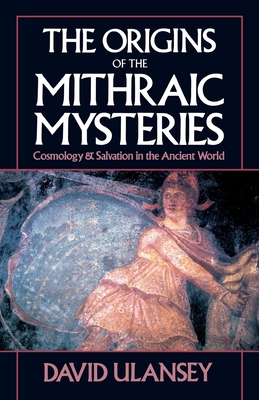
Ulansey, David
product information
description
ests of Alexander the Great the dramatic unification of the Mediterranean world created exceptionally fertile soil for the growth of new religions. Christianity, for example, was one of the innovative religious movements that arose during this time. However, Christianity had many competitors, and one of the most remarkable of these was the ancient Roman "mystery religion" of Mithraism.
Like the other "mystery cults" of antiquity, Mithraism kept its beliefs strictly secret, revealing them only to initiates. As a result, the cult's teachings were never written down. However, the Mithraists filled their temples with an enigmatic iconography, an abundance of which has been unearthed by archaeologists. Until now, all attempts to decipher this iconography have proven fruitless. Most experts have been content with a vague hypothesis that the iconography somehow derived from ancient Iranian religion.
In this groundbreaking work, David Ulansey offers a radically different theory. He argues that Mithraic iconography was actually an astronomical code, and that the cult began as a religious response to a startling scientific discovery. As his investigation proceeds, Ulansey penetrates step by step the mysteries concealed in Mithraic iconography, until finally he is able to reveal the central secret of the cult: a secret consisting of an ancient vision of the ultimate nature of the universe.
Brimming with the excitement of discovery--and reading like an intellectual detective story--Ulansey's compelling book will intrigue scholars and general readers alike.
Like the other "mystery cults" of antiquity, Mithraism kept its beliefs strictly secret, revealing them only to initiates. As a result, the cult's teachings were never written down. However, the Mithraists filled their temples with an enigmatic iconography, an abundance of which has been unearthed by archaeologists. Until now, all attempts to decipher this iconography have proven fruitless. Most experts have been content with a vague hypothesis that the iconography somehow derived from ancient Iranian religion.
In this groundbreaking work, David Ulansey offers a radically different theory. He argues that Mithraic iconography was actually an astronomical code, and that the cult began as a religious response to a startling scientific discovery. As his investigation proceeds, Ulansey penetrates step by step the mysteries concealed in Mithraic iconography, until finally he is able to reveal the central secret of the cult: a secret consisting of an ancient vision of the ultimate nature of the universe.
Brimming with the excitement of discovery--and reading like an intellectual detective story--Ulansey's compelling book will intrigue scholars and general readers alike.
member goods
No member items were found under this heading.
Return Policy
All sales are final
Shipping
No special shipping considerations available.
Shipping fees determined at checkout.







